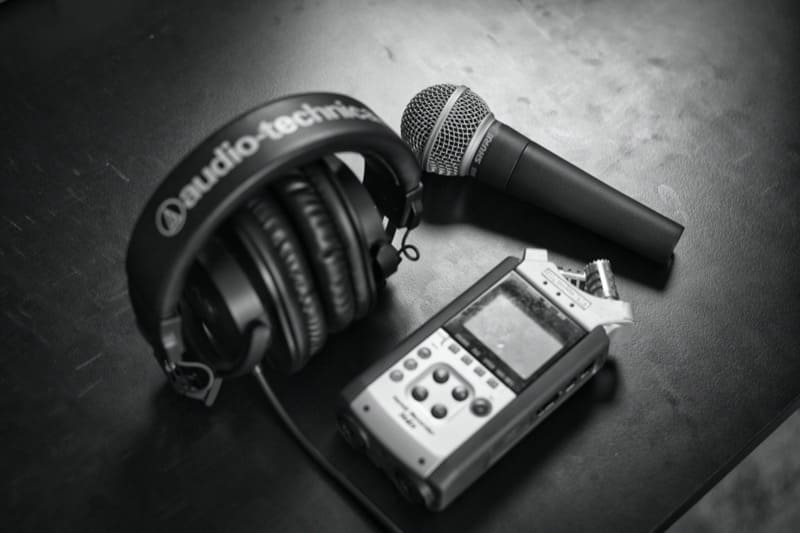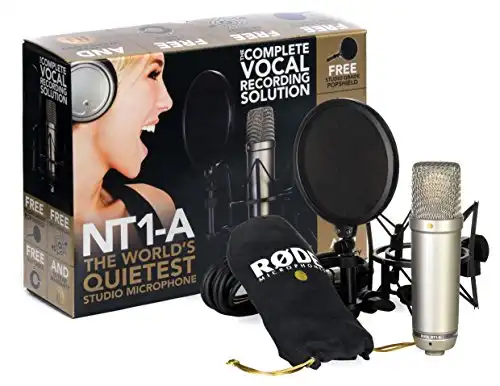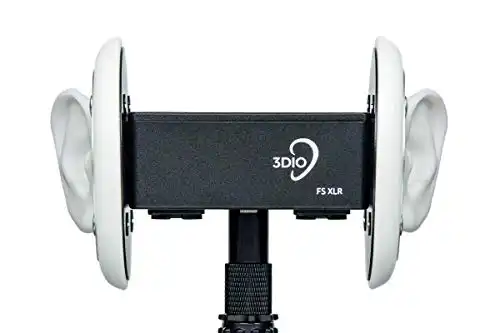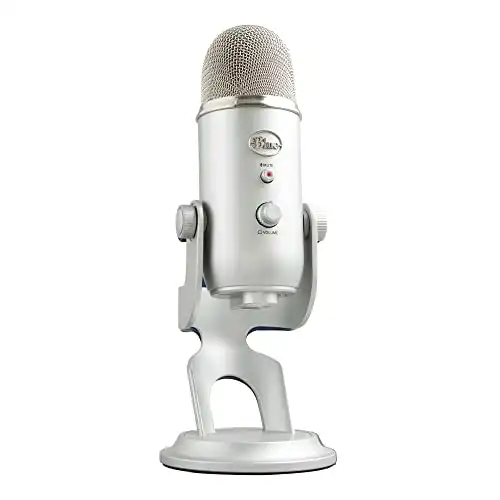Are you an ASMR artist, and you’re looking to start up a youtube channel but can’t decide which microphone to get?
Or maybe you’ve been doing ASMR for a while now, but you’re tired of the poor sound quality you currently have, and you’re looking to upgrade to a better one?
Well, look no further for you’ve come to the right place.

The most important aspect of an ASMR video is the quality of sound your audience hears. This is determined by the type and quality of the microphone you use.
Hence, getting first-hand knowledge as to what particular microphone to go for, the model, and the features that should accompany an ASMR mic is a top priority.
First, the best microphone for ASMR is a condenser microphone.
A condenser microphone is a specific type of recording device that’s all about fidelity. Condensers are incredibly responsive and transparent as to what’s in front of them whether it be vocals, tappings, clickings. Any form of sound at all.
Condenser microphones, unlike any other type of microphone, pick up the slightest bit of sounds because of their sensitivity. This is a plus because your audience wants to experience every subtle, tingly sound that will trigger their ASMR.
Now that you’re clear on the type of mic to get, the question remains… “which one of them is the best for my ASMR video?”.
Through extensive research on the significant requirements and features an ASMR mic is supposed to have, coupled with what end-users have said about the products, I have highlighted the top 3 best ASMR microphones in the business.
Table of Contents
Rode NT1-A
Starting on this list is a quality Australian-manufactured microphone that has proven to be among the best ones you can use for ASMR.
It’s a cardioid condenser microphone. That means sounds can be picked up anywhere around the front and to the sides of the grill. It makes it an excellent choice for assortment videos where you need to increase and reduce the intensity of your voice, intermittently, to trigger some particular set of ASMR tingles.
It has a very low self-noise level and is widely recognized as one of the world’s quietest studio microphones.
The low noise makes the NT1-A an ideal microphone for soft, subtle spoken words, attributed with ASMR, and as well perfect for audio involving tappings, brushings, and so on.
As far as specs go, the
Having said all that, let’s go ahead and talk about what you get in the box.
As you would expect, you get the microphone. You also get a pouch that serves to cover and protect the microphone from dust and scratches, and you get a shock mount that has a pop filter attached to it, an XLR cable, and some documentation.
The construction of the microphone is a solid build and has a gold dot that tells you where the front of the mic is. The pop filter is double-layered, which means it has two layers of the mesh material and does a good job of isolating plosives.
The pop filter is an essential feature, especially if you are going to be using it for ASMR because explosives can be very uncomfortable and annoying…and that defeats the purpose the ASMR is supposed to achieve in your audience.
A lot of users have voiced the satisfaction they get from using this microphone because of its quality and the next-to-zero noise it gives off. However, this is expected, especially for the price you have to put up for this mic. It’s not exactly premium-priced, but you will have to reach deep into your pockets to get a
It cannot be overemphasized that this mic is a good choice, but then, it has its flaws.
One of the world's quietest studio mics.
Users have complained that the shock mount that comes with the microphone is quite heavy, and you run the risk of your whole setup toppling over during a recording session.
Also, if you have absolutely no idea about how sound connections work, you might have a hard time setting up this mic. The quality of this microphone demands that the audio interfaces that will be needed to get it up and running. It’s not merely a plug-and-play mic.
3Dio FS (Free Space)
Next is a 3D Microphone manufactured by the company 3Dio that specializes in making binaural microphones.
The 3Dio FS binaural microphone is a high-quality 3D microphone and the best one at that on the market. The integrated microphone capsules are exceptionally sensitive and very quiet, making it perfect for binaural recordings.
The most important feature of the Free Space microphone is that it captures sound just like you hear sound in the real world. When you listen to a recording from the 3Dio Free Space using headphones, you hear the sounds and voices as if you were there, in person, at the time of recording.
This brings out the realistic tingly feeling an ASMR video or audio is meant to give to the listener. The effect is so powerful because this microphone’s design is based on over ten years of research into binaural technology.
The 3Dio FS binaural microphone features a stereo ⅛ inch output jack. Simply plug it into your stereo audio recorder or microphone pre-amp, and start recording.
The Free Space comes standard with a ⅝ inch microphone stand adapter installed in the base, which is removable. The bottom of the microphone has a female thread mounting hole. So you can connect it to a hot-shoe adapter or used to mount directly onto a tripod or grip handle.
The Free Space uses a 9V alkaline battery within the chassis, which is used to power the microphone capsules.
On the mic, itself is a power switch to turn it on and off and a bass roll-off switch, which helps avoid unpleasant noise from going into the ears.
This microphone has a frequency range of 100Hz to 10kHz, a sensitivity of -31dB, and a self-noise ratio of about 80dB
Unboxing the 3Dio Package, you get a binaural microphone that has silicone prosthetic ears that depict actual human ears. You also get the 3.5 mm cable that connects the microphone to a digital recorder, camera, audio interface, or plugged into a mixing console.
A lot of users appreciate the binaural feature of the microphone, it gives the listeners this 3D effect other microphones cannot provide. Most ASMR listeners prefer the Ear-to-Ear form of ASMR compared to different types of assortments.
This microphone does not come with its negatives as well. Most people complain about the non-flexibility of the product. You cannot easily replace the battery, and a completely inflexible mounting option makes it stressful to record with.
Blue Yeti USB
The last one we’re going to talk about is a device that has gained popularity amongst the home recording community, the Blue Yeti.
The Yeti is one of the most versatile tools for creating amazing recordings, no matter what the source or environment is. It features three premium condenser capsule array that allows you to record in four unique polar patterns, including cardioid, omnidirectional, bidirectional, and stereo, making it a perfect choice for ASMR videos.
The Yeti is not a small microphone. It’s made of sturdy metal and stands almost a foot tall and weighs about 4 pounds. The Yeti comes with a USB cable. It’s compatible with Macs and PCs right out of the box…no drivers or software needed; just plug it in and start recording.
The Yeti comes with a built-in headphone amplifier for zero-latency monitoring so you can ensure that your recording levels are just right. What’s also cool about the headphone jack is that you cannot only use it to monitor your mic level, but you can also use it to listen to your computer’s audio.
There are simple controls for headphone volume, pattern selection, and microphone gain located directly on the microphone, so you’re always in control of your recording.
In terms of specifications, the
If you need to interview multiple people with one mic, then the Yeti has versatile settings to do it.
The build quality of this microphone is quite stable and leans towards the heavier side. The manufacturer made it so on purpose because if you’ve got a light microphone, you’re going to get a lot of those high-end resonant frequencies. The mic is going to be more prone to little vibrations, and you’re going to hear that in the output.
Although subtle, it is there, especially when people are listening to you on headphones. They’ll feel uncomfortable as a result of the high pitch resonant frequency, and they will not know why.
That’s a direct contradiction of what an ASMR video is supposed to do so this feature alone gives the
Many users have praised the
Also, it’s simple to use; just plug and play. You don’t necessarily need to be an audio guru to use it.
Although the yeti is an overall good and simple-to-use mic, some users have made complaints about the weight of the microphone. It’s quite challenging to lug around. And because of the weight, the stand to which the yeti is mounted could get loose over time.
Also, the yeti does not come with a lot of accessories. It only comes with the USB cable you’ll use to connect to your computer.
What to look out for when getting an ASMR mic
Mic self-noise
Like I said earlier on, the best type of microphone fo ASMR is the condenser microphone…and that’s because they are more sensitive to soft and subtle sounds than any other kind of microphone.
But one common feature of a condenser microphone is what sound engineers call equivalent noise level, also known as microphone self-noise. It is the signal the microphone produces on is own even when no sound sources are present.
It’s present in all condenser microphones, but when selecting an ASMR microphone, it’s best to go for the one with the least self-noise as possible. When getting an ASMR mic, you should look out for those with a self-noise of 15dBA and lower.
Another way to determine the self-noise of a mic is the noise ratio. The higher the self-noise ( S/N) ratio, the better and quieter the mic will be. A mic with an S/N ratio of 80dB is perfect compared to the one having an S/N ratio of 60dB.
Polar pattern
The polar pattern for mics is its sensitivity to sound relative to the direction or angle from which the sound comes out.
There are several microphone polar patterns, but for ASMR, the best ones you should look out for are the Omnidirectional ones, which pick up sounds around the microphone, Binaural ones, which gives this 3D effect to the listener making it feel like they are present during the recording and cardioid.
Although for the cardioid, it’s best you use two of them. The bi-directional polar pattern that can trigger some tingles.
Mode of connection
Microphones generally connect to your computer either directly through USB, or via some form of an audio interface using XLR cables. If you do not know sound, you should consider getting a microphone with a USB option. It’s simpler to use; just plug it in, and you’re ready to go.
Also, depending on the quality, some condenser microphones need phantom power to run. You would need to connect your mic to a device that produces phantom power before plugging it into your computer.
Conclusion
All three microphones are good in their way.
The
The 3Dio FS is a specific type of mic (Binaural) that gives a 3D experience but can be quite frustrating to use.
And then the
With the features and the benefits of these mics highlighted, it’s really up to you to decide.


